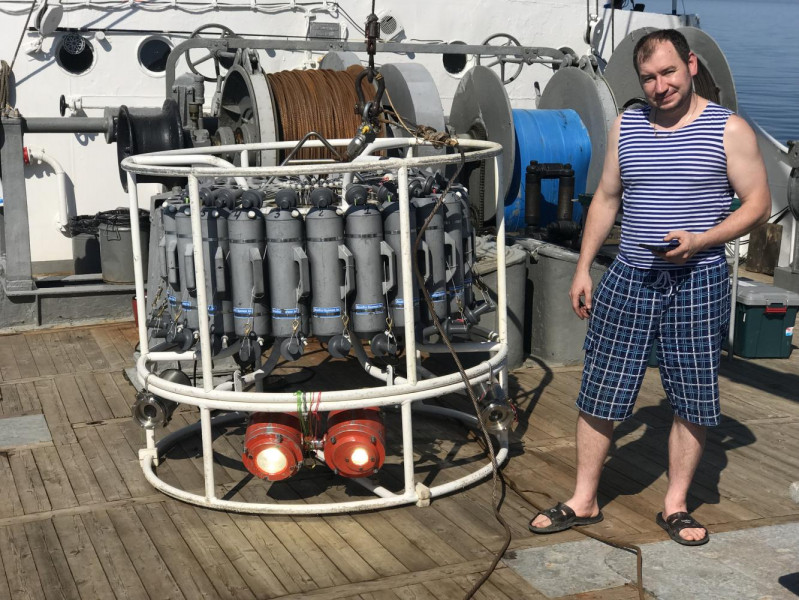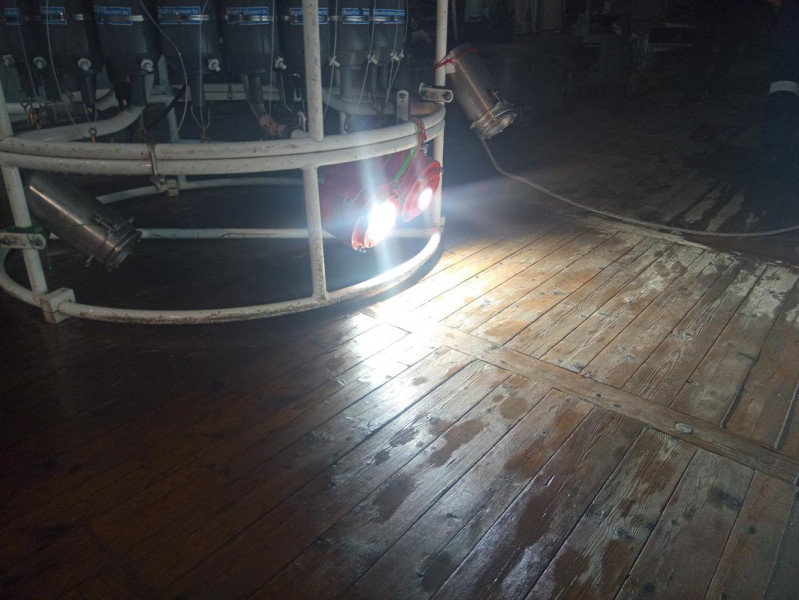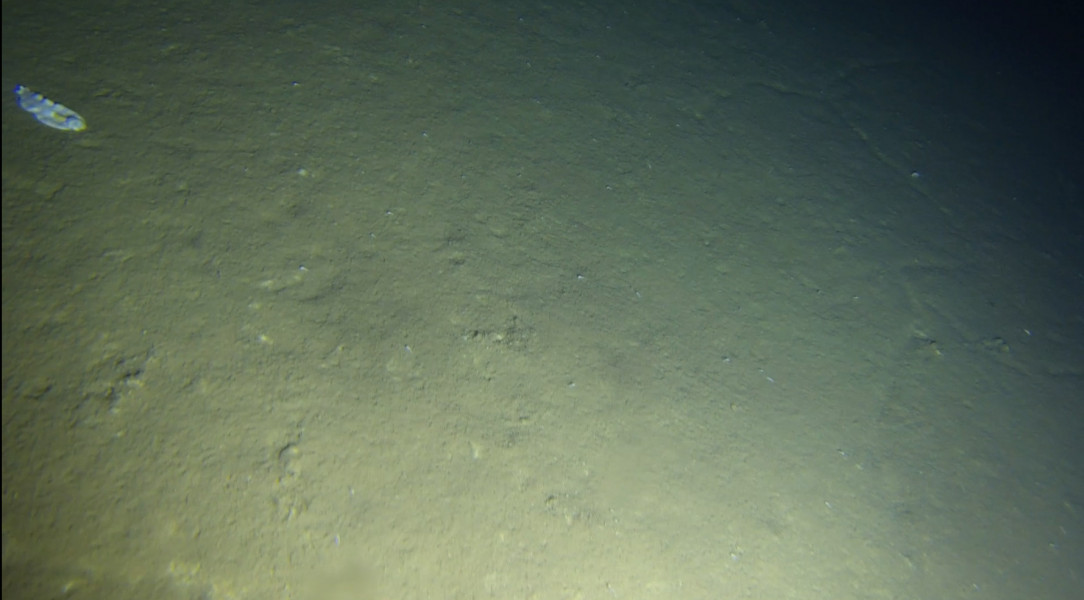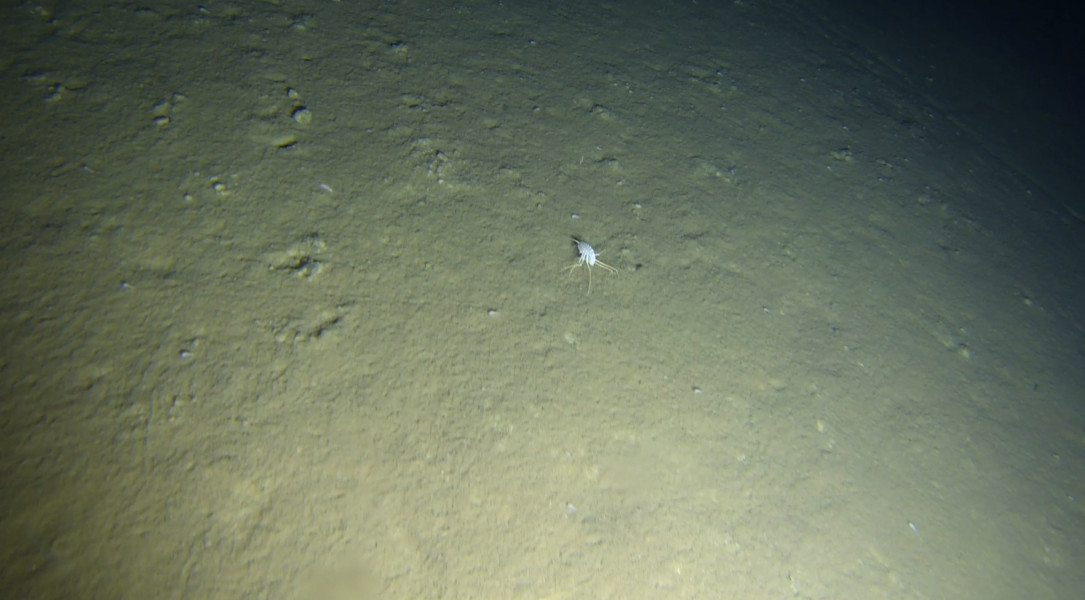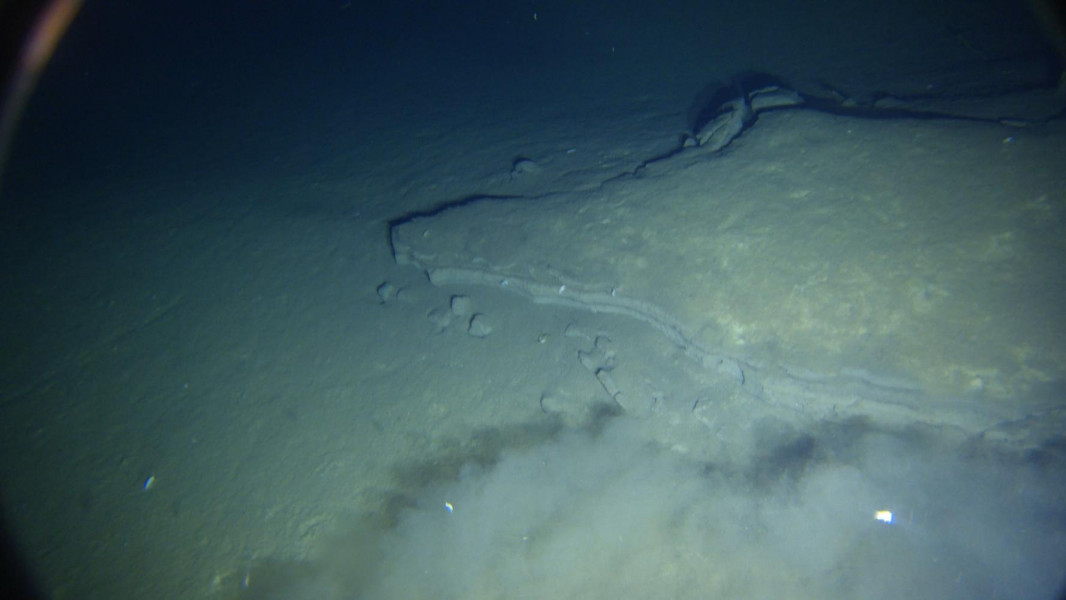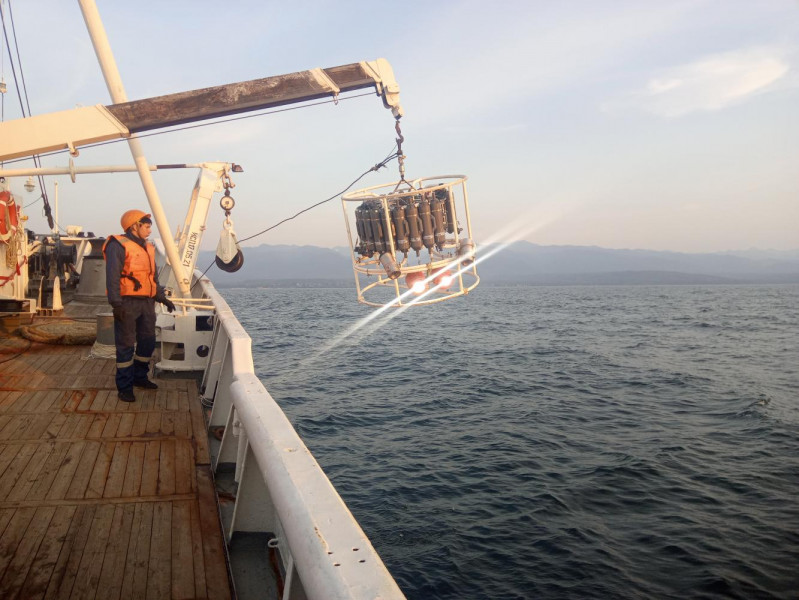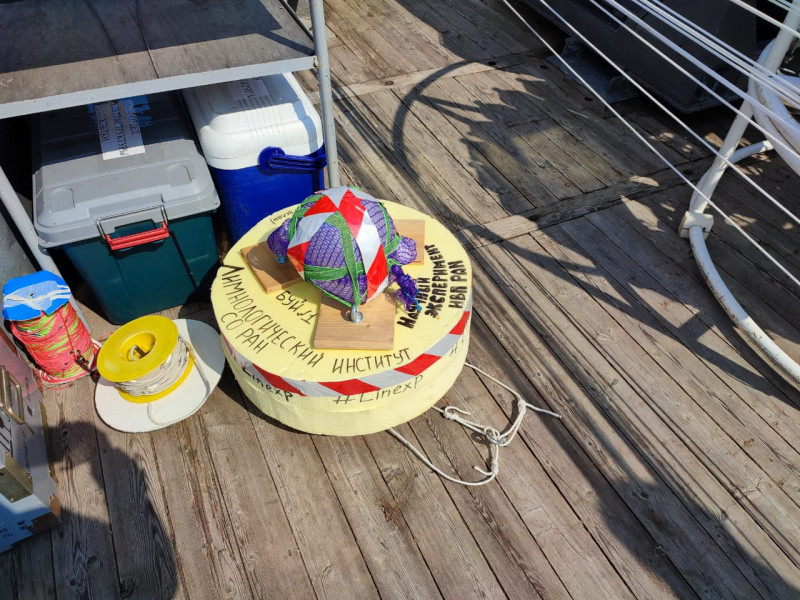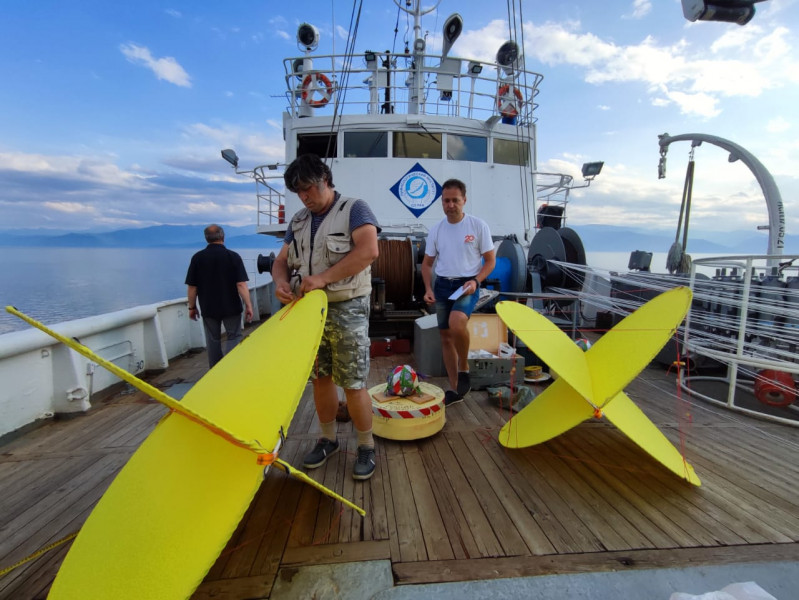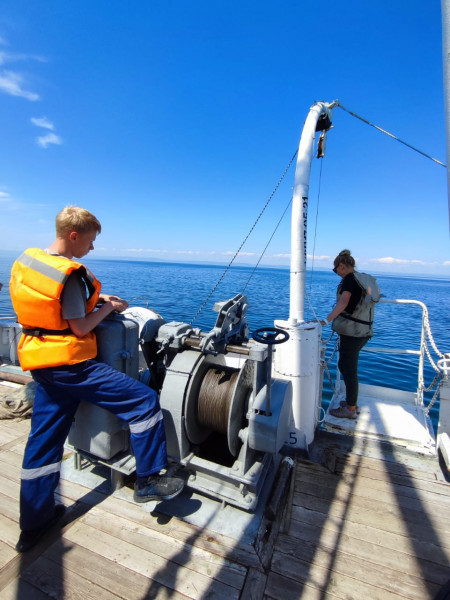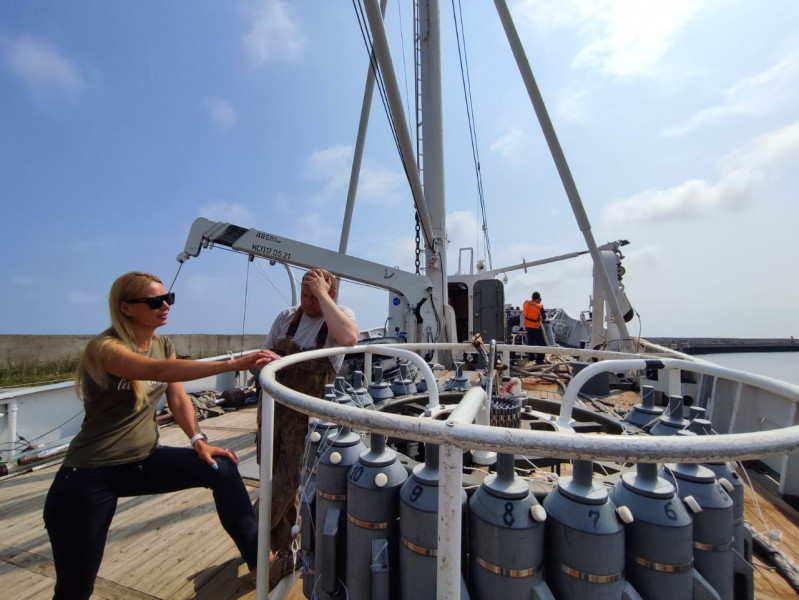Hydrophysical expedition on board the RV “G. Yu. Vereshchagin” from 23 July to 5 August 2021
The expedition within the framework of the programmes “Investigation of the advective and turbulent water exchange of Lake Baikal and its impact on the lake ecosystem, risks of catastrophic events”, “From the cell to the ecosystem: Investigation of the ultrastructure of hydrobionts and their communities in the evolutionary and ecological aspect by methods of cell biology and genomics” and “Ecological and economic assessment of the functioning of freshwater biogeocenosis, fundamental and applied aspects” was carried out from 23 July to 5 August.
The aim of the expedition was to assess the impact of advective and turbulent water exchange on the change in the ecosystem of Lake Baikal, which determines its water quality.
Fieldwork was carried out in three basins of Lake Baikal, in Barguzin Bay and the Maloye More Strait. During the expedition, samples were taken in the fixed layers from the surface to the bottom along a standard grid of stations of longitudinal sectons and cross-sections of the lake using a Carousel SBE-32 Water Sampler equipped with 24 bathometers of 5 l each. Water samples for the chemical analysis were taken for the methane concentration and to study the spatial distribution of dominant species of microalgae throughout the water area of Lake Baikal. Phytoplankton samples were taken with Juday net. Water was sampled at 50 stations. Hydrophysical measurements were carried out at 107 stations using an SBE-25 high-precision CTD profiler with additional sensors of dissolved oxygen, transparency and concentration of suspended matter. The total number of samples:
- 1. For chemical analysis (methane) – 565
- 2. Phytoplankton (net samples) – 34
- 3. Phytoplankton (using bathometers) - 207
Temperature and electrical conductance of the water surface were recorded along the RV route, and gas bubble seepages were monitored using a hardware and software complex based on the Furuno echo sounder with the echogram data recording.
An experiment was conducted with the autonomous drifting buoys at the site of the occurrence of a ring structure near the Kultuk settlement and Nizhneye Izgolovie Cape of the Svyatoy Nos Peninsula. The drift trajectories were obtained during the installation of underwater sails with an area of 3 m2 at a depth of 200 m.
Additionlally, underwater photography was carried out with cameras attached to the frame of the Carousel SBE-32 sampler. Video footage of the drift near deep-water gas seepages was filmed.
Based on the express method (the analysis of high-quality net samples), the spatial distribution of dominant species of the summer phytoplankton in the pelagic zone and bays of Lake Baikal was studied in the water layer from 0 to 25 m. In the southern basin, the Сyclotella minuta and Сyclotella baicalensis diatoms predominated. In phytoplankton of the central basin, the Stephanodiscus meyeri were present in significant numbers, and diatoms of the genera Сyclotella, Fragilaria/Ulnaria and Aulacosiera developed in smaller numbers. In phytoplankton from the northern basin, the biomass of microalgae was insignificant: there were small numbers of the Anabaena flos-aquae,, A. scheremetievi and A spiroides cyanobacteria, the Сyclotella minuta, Fragilaria/Ulnaria and Asrerionella formosa diatoms and the Dictyosphaerium pulchellum and B. lautenborni green algae.





